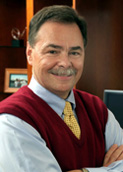
"Perfecting health care is a half answer if the living conditions that cause disease prevail."—Steven H. Woolf
In Montgomery County, Md., an affluent suburb of Washington, D.C., average life expectancy for white citizens is 80 years; African Americans living in the same county live an average of only 63 years—a disparity of almost 22%. One factor that accounts for this significant difference in health and longevity among residents of the same county is a set of factors collectively known as the social determinants of health (the conditions in which people live and work and the systems in place to deal with illness), which include poverty, lack of education, and racism.
The 14th report of the Blue Ridge Academic Health Group explores the role of academic health centers in addressing these social factors that lead to avoidable disparities in health outcomes. The report was written to shine a bright light on the importance of social determinants of health and the impact they have on the health and well-being of society, as well as to call for research examining which models of health promotion and health care delivery best improve the health of individuals affected by these social factors.
The leadership and cooperation of multiple sectors, including academic health centers and the universities with which they associate, will be required to intelligently address and ameliorate avoidable differences in health across discrete populations within our nation. The report features several recommendations on what academic health centers and others can and should be doing to improve the health of individuals affected by these social factors.
The Woodruff Health Sciences Center sponsors and co-leads the Blue Ridge Group, which is composed of leaders of university health sciences centers and other thought leaders in health policy. The group studies and reports on issues of fundamental importance to improving our health care system, and to enhancing the ability of academic health centers to sustain optimal progress in health education, research, and patient care. Our leadership on this important issue is just one way in which the WHSC is serving as a model academic health sciences and services center as we continue transforming health and healing … together.
Please share your thoughts and feedback at evphafeedback@emory.edu.
Architectural firm chosen for research building
Emory's Board of Trustees has given approval for selection of the architectural firm ZGF (Zimmer Gunsul Frasca Architects) to design the new research building planned for construction behind Emory-Children's Center on the site of the old Turman student residence complex on Haygood Drive. The building will have roughly 196,000 gross square feet of space, about 60% of which will be dedicated to pediatric research, with the remainder focused on other WHSC research, including cancer, immunology, and drug discovery. Current plans call for ground-breaking within a year, pending additional board review and approval.
The Joseph B. Whitehead Foundation recently gave $25 million toward the pediatric portion of the building. Much of the remainder of the $90 million estimated cost will come from joint fundraising by Children's Healthcare of Atlanta and Emory.
With the new building, Emory and Children's will recruit 40+ clinician-scientists and PhD researchers. Children's recently announced that it will devote $75 million to pediatric research, and part of that money will be used for recruitment of these new faculty members. Read more.
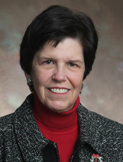 Lynne Ometer
Lynne Ometer
Hospitals turn food waste into compost
A few carrots left on a plate, some biscuits uneaten, remnants of a tray of meatloaf at the end of the cafeteria day. It adds up. Food service workers in Emory's hospitals have always been conscientious about reducing waste, trying to walk the fine line between preparing too much food and too little. But when new pilot programs in composting food waste began recently at Wesley Woods Hospital (WWH) and then at Emory University Hospital (EUH), staff were surprised to see how much waste piled up—and how much could be diverted from landfills or garbage disposals and converted into compost, some of which will return to Emory to enrich campus flower beds.
Last fall, Lynne Ometer, director of food and nutrition services, and her team began connecting Emory's hospitals with a waste-to-compost program already under way in the university. As the smallest and most compact of the hospitals, WWH went first, focusing on "preconsumer" waste—scraps generated in food preparation or unusable food items left after serving—and on some "postconsumer" waste—food that has already been served to a patient. (The hospital has not yet attempted the more complex process of composting postconsumer waste left by cafeteria customers).
Arlene Bennett, in charge of food service at the geriatric facility, trained food service staff how to separate what can go into a bin for pickup (food scraps) and what cannot (anything else). The special bins are picked up regularly by Greenco Environmental, an organic recycling company that processes the waste into compost material to improve soil and provide nutrients for plant growth.
How much waste can there be in a 100-bed hospital? In the first month, WWH diverted 5,000 pounds of food that would have gone into the hospital dumpster and from there to a landfill.
In December, a similar pilot program began at EUH, under the leadership of food management team members Dave Horning and Gwen Mayes, with a focus on preconsumer waste. After only one month in operation, 7,000 to 8,000 pounds of waste were diverted from the hospital's garbage disposal system.
The pilots have been less difficult to implement than Ometer anticipated, but there are challenges, especially at EUH, where pickups and deliveries at the hospital's small loading dock must be scheduled precisely around the clock. EUH Midtown, where composting has not yet been implemented, will present even more challenges because containers will have to be transported down several floors to reach the loading dock.
It's still too early to estimate any cost savings, says Ometer, but what is certain is that keeping waste out of landfills or sewers is the right thing to do for the environment. A similar pilot waste-to-compost program will begin at Emory University Orthopaedic & Spine Hospital later this year.
Food composting efforts such as these are some of the fruits of a sustainability task force established in health sciences by EVPHA Fred Sanfilippo last fall.
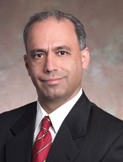 Amir Emamifar
Amir Emamifar
Outpatient pharmacy under construction in clinic
Construction began in January on a new retail outpatient pharmacy on the second floor of Clinic A near the skywalk to Emory Hospital. In addition to prescription and over-the-counter drugs routinely found in retail drugstores, the pharmacy will provide medications used by cancer and transplant patients that sometimes can be hard to find.
"The new facility will help us serve our patients better, including faculty, staff, and students at Emory," says Amir Emamifar, administrative director of pharmaceutical services for the hospitals, clinic, and Winship Cancer Institute.
The Pharmacy at Emory is slated to open in March, and plans are under way to incorporate an Emory employee prescription plan into the employee benefits package in the near future.
Emory Healthcare will be sole owner of the pharmacy and will partner with AmerisourceBergen Corp on day-to-day operations. Read more.
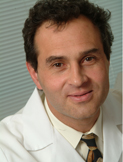 Angel Leon
Angel LeonTelehealth services expand to heart and vascular
More than 20 heart and vascular specialists now are providing care via telehealth, and Emory is linked to almost 40 presentation sites for this type of care throughout the state, in affiliation with the nonprofit Georgia Partnership for Telehealth. The service is based at Emory University Hospital Midtown, where a telehealth room is set up for cardiac video consults. Physicians can listen to a patient's heart and lungs via an amplified stethoscope and examine the patient's legs and feet for swelling via video camera and computer monitor.
Telehealth helps make Emory experts more accessible not only to patients but to referring physicians as well. Emory also offers telehealth services in geriatric psychiatry and transplant. Read more.
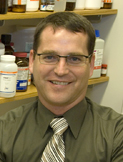 Gary Miller
Gary Miller
Bio stats:
• Prof, Environ & Occup Health; Assoc Dean for Research, RSPH
• Prof, neurology and pharmacology, medical school
• Woodruff Leadership Academy
• Assc Prof, RSPH
• Asst Prof, UT, Austin
• Asst Research Prof, Duke
• Postdoc, Emory (neurology) and Duke (cell biology)
• PhD (pharmacology & toxicology), Univ of Georgia
• BA, MS, Old Dominion University
Contact:
gary.miller@emory.edu
Aligning interests to enable integrated research
One in a series of profiles of people in the Woodruff Health Sciences Center
One of Gary Miller's most pressing responsibilities as associate dean for research in the Rollins School of Public Health is to help decide how to configure 20,000 square feet of laboratory space in three floors of the Claudia Nance Rollins Building expected to open this May. Having the new "wet lab" space (think beakers and pipettes instead of computers) changes everything, says Miller.
For starters, it allows the school to recruit faculty who need such laboratories, like the recently hired Dana Barr, a former CDC scientist whose analytic facility on environmental contaminants will support the entire university.
Equally important, it provides the chance to bring many existing Emory researchers with aligned interests closer together, including those from public health, which will use labs on the fourth and sixth floors, and those from medicine, which is leasing fifth floor lab space.
For example, a group of infectious disease experts with joint appointments in public health and medicine will move from labs now spread across campus to ones on the sixth floor. Bacterial meningitis expert David Stephens, WHSC VP for research, will no longer have to travel from his lab in the VA Medical Center to work with long-time collaborator Keith Klugman, a specialist in antibiotic-resistant strains of pneumonia and other diseases. The two also will rub shoulders—and trade ideas—with researchers like Carlos del Rio (HIV/AIDS) and Christine Moe (environmental transmission of infectious agents that cause foodborne and waterborne disease).
Miller is not responsible for assigning lab space on the floor leased by the medical school, but he says the scientist administrator who is—pharmacology chair Ray Dingledine—is following the same model of aligned interests. Half the floor has been allocated to medicine's microbiology and immunology department, whose chair, Jeremy Boss, is now making plans for whose work best fits the space.
Miller, who holds appointments in medicine (neurology and pharmacology) in addition to his primary appointment in public health (environmental and occupational health) will move his own lab, along with eight postdoctoral fellows, technicians, and masters and doctoral students, from the Whitehead Biomedical Research Building to the new building's fourth floor. There he and his team will work alongside other researchers focused on chemical-based studies in toxicology and the environment.
"One of the reasons Dean Curran asked me to take on this job," says Miller in reference to his role as associate research dean, a 25% time position, "is that I am a scientist and I understand the challenges and opportunities that go along with getting the right scientists in the right lab space."
Miller, who directs the Emory Parkinson's Disease Collaborative Environmental Research Center, studies the effect of pesticides and other toxins on the onset and progression of Parkinson's disease (PD), for which he has developed a mouse model. In addition to providing clues about the role of environmental toxins in PD, this mouse model may help in development of biomarkers of exposure as well as therapeutic agents to restore functions damaged in PD. Read more about Miller's research.
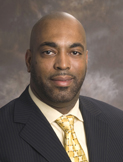
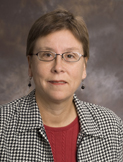 2010 fellows Sheldon Sloane and Amelia Langston
2010 fellows Sheldon Sloane and Amelia Langston
• WLA fellows named for 2010
Green, blue, yellow, red—learning how the color lineup in the Birkman personality test reflects their strengths, weaknesses, and stress behaviors is just one way 24 new fellows in this year's class of the Woodruff Leadership Academy (WLA) will gain insight into growing their own leadership skills and those of others.
Made up of people from throughout the health sciences, the group will get a crash course on the WHSC—its history and finances and how it fits into Emory as a whole. They will hear stories of how the center's namesake helped position Emory and Atlanta for greatness. They will learn from business school professors about leadership styles, conflict management, and strategic thinking. They will listen to local CEOs about leadership in action. And they will divide into four multidisciplinary teams to tackle projects strategic to the WHSC's future.
Modeled on an in-house corporate leadership program run by General Electric since the mid 1950s, WLA is now in its eighth year and has 166 alumni. Read more about recent accomplishments of WLA alumni.
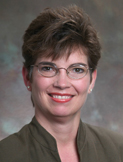 Robin Ginn
Robin Ginn
• New billing system implemented for clinical research
Phase 1 of a new web-based tool to assist with research billing compliance is being rolled out this month by the Office for Clinical Research (OCR). Winship Cancer Institute is the pilot site, with other units joining over the next year.
The Emory Research Management System (ERMS) prepopulates billing forms with information that helps inform billing departments about which hospital or clinic services are study-related and grant-billable, according to Robin Ginn, OCR executive director. She says that ERMS supports billing compliance by providing a financial safety net that reduces the possibility of errors and increases the capture of possible grant-billable charges.
"Our current research billing process is effective but enormously burdensome for our research coordinators," says Ginn. "ERMS is designed to reduce effort and inefficiencies so they can focus on what they do best—providing care to patients." Read more.
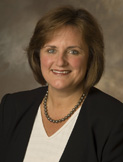 Susan Grant
Susan Grant
• Timeline goal for achieving Magnet status is 2012
Last year, Emory Healthcare began the process of submitting data to enable its application for Magnet status, the American Nursing Credentialing Center's highest international recognition of nursing excellence. Only 300 individual hospitals across the world have this recognition, and Magnet status is even rarer for multi-hospital systems as a whole (11 in the country), which is what Emory Healthcare seeks.
During 2010, Emory Healthcare will continue collecting documentation in five Magnet component areas required for application: (1) transformational leadership, (2) structural empowerment, (3) exemplary professional practice, (4) new knowledge, innovation, and improvement, and (5) empirical quality outcomes. The plan is to submit this material to ANCC in 2011. The timeline goal is to secure a site visit culminating in Magnet recognition in early 2012, according to Susan Grant, Emory Healthcare chief nursing officer, who leads the Magnet effort.
Kathleen Rodger
• Rodger directs clinical trials at Winship
Kathleen Rodger has been appointed director of the Clinical Trials Office at the Winship Cancer Institute. Rodger served as associate director of clinical trials in her previous position at James Graham Brown Cancer Center at the University of Louisville, where she was responsible for establishing policies and standard operating procedures as well as serving as a primary reviewer of new protocols to determine the feasibility and cost-effectiveness of new trials. She also was responsible for financial monitoring and expenditure control for clinical trial budgets and for departmental operational budgets, and she assisted faculty physicians in coordinating clinical trials in various community sites. Read more.
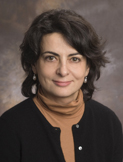 Viola Vaccarino
Viola Vaccarino
• Vaccarino chairs epidemiology
Viola Vaccarino became Rollins professor and chair of epidemiology in the Rollins School of Public Health on March 1. She will retain her joint appointment in the medical school (cardiology). Vaccarino, who is a current fellow of the Woodruff Leadership Academy, directs the Emory Program in Cardiovascular Outcomes Research and Epidemiology (EPICORE) and has a joint appointment in the Nutrition and Health Sciences Program in the Laney Graduate School. Vaccarino's research, which is supported by 11 NIH grants, focuses on heart disease outcomes, etiology, and relationship to stress, gender, and health disparities. Read more about her research.
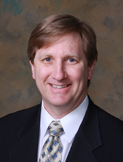 Allan Kirk
Allan Kirk
• Kirk named editor-in-chief of premier transplant journal
Transplant immunologist Allan Kirk, a Georgia Research Alliance eminent scholar, will serve as editor-in-chief of the American Journal of Transplantation, a five-year appointment beginning Sept. 1. This journal has had only one other editor since its inception in 2001. A major focus of Kirk's research is how to reduce the need for immunosuppressant therapy. Read more about his research. Read a cover feature on transplant medicine in Emory Health magazine that describes Kirk's work.
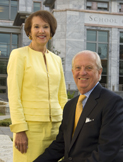
Ada Lee and A.D. "Pete" Correll
• Corrells receive international philanthropy award
Ada Lee and Pete Correll will be honored by the Association of Fundraising Professionals (AFP) as the Outstanding Philanthropists of the Year at AFP's 50th anniversary convention in Baltimore in April. AFP has more than 300,000 members in 200 chapters globally. This award follows the APF's greater Atlanta chapter selection of the Corrells as their philanthropists of the year last November.
The Corrells have long been leaders in the Atlanta community. Pete Correll led Georgia-Pacific Corp. for 13 years and received numerous awards for his civic leadership while in that role. More recently, he headed a community effort to save and revitalize Grady Hospital, and he chairs that hospital's board. Like her husband, Ada Lee Correll has poured time and talent into a variety of local civic and charitable causes. She currently chairs the medical school's committee as part of Campaign Emory. Read more about the Corrells' work. Read more about the Corrells' involvement with Emory.

• Emory signs light up midtown campus
Large new EMORY letters were installed atop the medical office tower in midtown in December, culminating a design, research, and permit effort that took at least 18 months. The oversized letters (11 feet on north/south and 7 feet on east/west elevations) were airlifted by helicopter, and installation took two weeks. The signage uses energy-saving LEDs, which should last six to eight years before any diminution in brightness is discernible.
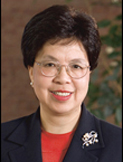 Margaret Chan, director-general of WHO, will give the CDC's Koplan lecture on March 24.
Margaret Chan, director-general of WHO, will give the CDC's Koplan lecture on March 24.
• Upcoming events
- Registration for Emory Healthcare's team in the July 4 Peachtree Road Race begins March 3 at 7:00 a.m. and closes on March 19 at 11:59 p.m. For more information, see website.
- The eighth annual Jeffrey Koplan lecture will be held at the CDC's Global Communications Center, Bldg. 19, Auditorium B, on March 24, 10:00 a.m. to 11:00 a.m. The guest lecturer is Margaret Chan, director-general of WHO. For more information, please contact Susan McBreairty, 404-639-3183, heg8@cdc.gov. For attendees, the CDC needs completed security forms by March 8.
- The Center for Systems Imaging, which has one of two combined MR/PET scanners in the country, is holding an open house as well as presentations and a panel discussion on this technology on April 8. Please contact Debra Smith, dasmit3@emory.edu, for more information.
- "Swine origin H1N1 virus: The first pandemic of the 21st century," a symposium hosted by the Emory-University of Georgia Influenza Pathogenesis and Immunology Research Center on April 18-20 in Atlanta, will feature an international roster of speakers, including Anthony Fauci, director of the NIAID. Registration is open until March 15. For more information, contact Tanya Cassingham, 404-727-3450, tcassin@emory.edu.

